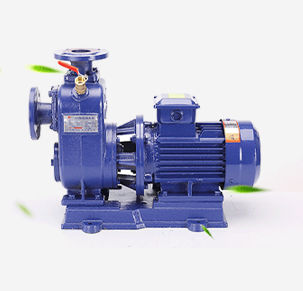Maltese
- Afrikaans
- Albanian
- Amharic
- Arabic
- Armenian
- Azerbaijani
- Basque
- Belarusian
- Bengali
- Bosnian
- Bulgarian
- Catalan
- Cebuano
- Corsican
- Croatian
- Czech
- Danish
- Dutch
- English
- Esperanto
- Estonian
- Finnish
- French
- Frisian
- Galician
- Georgian
- German
- Greek
- Gujarati
- Haitian Creole
- hausa
- hawaiian
- Hebrew
- Hindi
- Miao
- Hungarian
- Icelandic
- igbo
- Indonesian
- irish
- Italian
- Japanese
- Javanese
- Kannada
- kazakh
- Khmer
- Rwandese
- Korean
- Kurdish
- Kyrgyz
- Lao
- Latin
- Latvian
- Lithuanian
- Luxembourgish
- Macedonian
- Malgashi
- Malay
- Malayalam
- Maltese
- Maori
- Marathi
- Mongolian
- Myanmar
- Nepali
- Norwegian
- Norwegian
- Occitan
- Pashto
- Persian
- Polish
- Portuguese
- Punjabi
- Romanian
- Russian
- Samoan
- Scottish Gaelic
- Serbian
- Sesotho
- Shona
- Sindhi
- Sinhala
- Slovak
- Slovenian
- Somali
- Spanish
- Sundanese
- Swahili
- Swedish
- Tagalog
- Tajik
- Tamil
- Tatar
- Telugu
- Thai
- Turkish
- Turkmen
- Ukrainian
- Urdu
- Uighur
- Uzbek
- Vietnamese
- Welsh
- Bantu
- Yiddish
- Yoruba
- Zulu
Telephone: +86 13120555503
Email: frank@cypump.com
Dec . 13, 2024 05:15 Back to list
residential sewage pumps
Understanding Residential Sewage Pumps A Homeowner's Guide
When it comes to managing wastewater in our homes, many people are unaware of the vital role that sewage pumps play in maintaining efficient plumbing systems. A residential sewage pump is a crucial component that ensures proper waste management, preventing potential health hazards and plumbing disasters. In this article, we will explore what residential sewage pumps are, how they work, their types, and why homeowners should consider installing one.
At its core, a residential sewage pump is designed to transport waste and wastewater from bathrooms, kitchens, and laundry areas to the main sewer line or septic system. These pumps are particularly important in homes with basements, below-ground plumbing, or areas where gravity alone cannot efficiently move wastewater uphill. Without a reliable sewage pump, wastewater can accumulate, leading to unpleasant odors, plumbing backups, and even environmental hazards.
How Does a Sewage Pump Work?
Sewage pumps are equipped with a motor that powers a set of impellers, which helps to create suction that transports waste. The pump is typically installed in a sump basin, which collects the wastewater from various plumbing fixtures. Once the water in the basin reaches a predetermined level, a float switch activates the pump, allowing it to begin moving the wastewater through a discharge pipe and into the main sewage line. This automatic operation makes sewage pumps convenient and efficient for homeowners.
Types of Residential Sewage Pumps
There are two primary types of residential sewage pumps centrifugal pumps and submersible pumps.
1. Centrifugal Pumps This type of pump is commonly used in residential settings. It operates by using rotational energy to move water through the pump. Centrifugal pumps are effective for pumping sewage at lower volumes and are generally easier to maintain because they are usually installed above the liquid level.
residential sewage pumps

2. Submersible Pumps Unlike centrifugal pumps, submersible pumps are designed to work underwater. They are submerged in the sewage pit and are generally more powerful, allowing them to handle larger volumes of waste. Their design helps to reduce noise levels and can be ideal for homes that require significant pumping capabilities.
Why Consider Installing a Sewage Pump?
There are several reasons why homeowners should consider installing a sewage pump
1. Preventing Backups A sewage pump helps to prevent wastewater backups in your home, which can lead to significant damage and costly repairs.
2. Improving Efficiency By ensuring that wastewater is effectively transported away from your home, sewage pumps can improve the overall efficiency of your plumbing system.
3. Protecting Health and Environment A properly functioning sewage pump prevents the risk of sewage spills, which can pose health hazards and environmental issues.
4. Increasing Property Value Homes that are equipped with efficient sewage systems, including pumps, can attract buyers who value effective waste management.
In conclusion, residential sewage pumps are an essential investment for homeowners looking to ensure a safe and efficient waste management system. Understanding the different types of pumps, their functions, and the benefits they provide can help homeowners make informed decisions about their plumbing needs. Whether you’re building a new home or upgrading an existing system, considering a sewage pump is a step towards ensuring your home remains a safe and comfortable environment. Regular maintenance and inspections of your sewage pump can also help prolong its lifespan and efficiency, providing peace of mind for years to come.
-
Reliable Non-Clog Sewage Pumps with GPT-4-Turbo Tech
NewsAug.04,2025
-
High-Performance Air Pumps for Sand & Gravel | Efficient Transport
NewsAug.03,2025
-
ISG Series Vertical Pipeline Pump - Chi Yuan Pumps Co., LTD.|Energy Efficiency, Corrosion Resistance
NewsAug.03,2025
-
ISG Series Pipeline Pump - Chi Yuan Pumps | Energy Efficiency&Compact Design
NewsAug.03,2025
-
ISG Series Vertical Pipeline Pump - Chi Yuan Pumps Co., LTD.|High Efficiency, Low Noise, Durable
NewsAug.02,2025
-
ISG Series Vertical Pipeline Pump - Chi Yuan Pumps | High Efficiency, Low Noise
NewsAug.02,2025










